We’ve seen many apocalyptic movies showing the devastation left behind by a nuclear attack.
But how does one survive when the bombs start falling?
Countries are becoming more powerful each year. Advancing technology and enhanced destructive war capabilities make nuclear attacks a likely doomsday scenario.
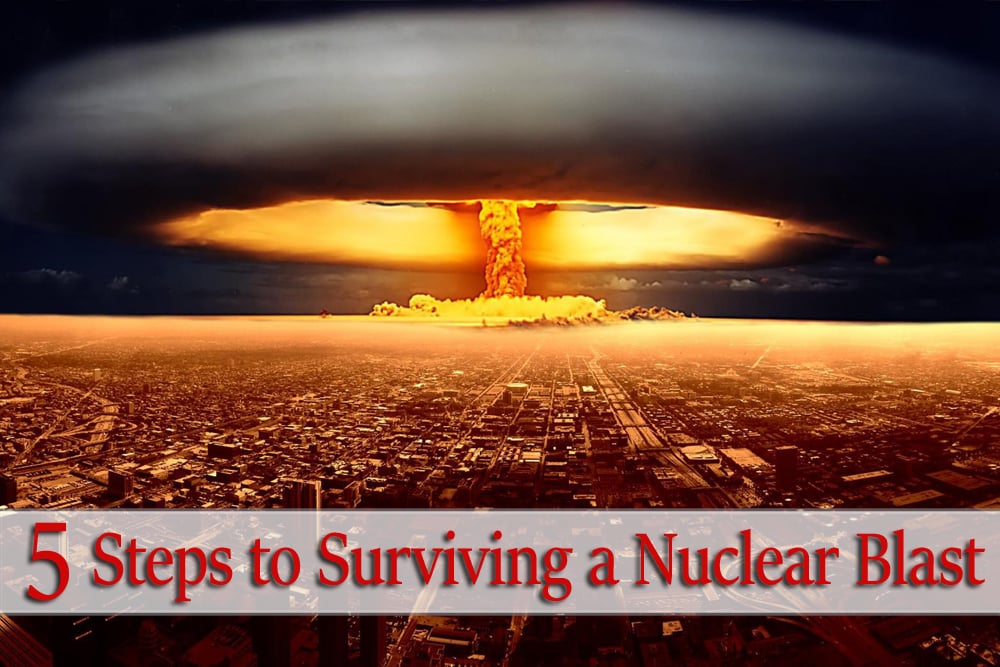
Quick Navigation
A. Effects of Nuclear Blast
Step 1: Get Away
Step 2: Protection
Step 3: Seek Shelter
Step 4: Stay Inside
Step 5: Cover Up
B. Treating Exposure
C. Prepping for a Nuclear Blast |
Nuclear weapons do exist. The fact that international conflicts could arise at any time certainly serves as a reminder that nuclear conflict is also a possibility.
Remember the destruction caused by atomic bombs dropped in Nagasaki and Hiroshima? Modern thermonuclear weapons are a hundred times more powerful than that.
A) Effects of a Nuclear Blast:
You may be wondering that if nuclear attacks are highly devastating, is there any chance that anyone might be able to survive? In this article, we outline the steps you can take to improve your chances of surviving a nuclear attack.
The truth is that there are many factors in a nuclear conflict which is critical in determining how survivable it is. Even if you survive the initial destruction, how would you continue surviving after that? First, there’s the nuclear blast.
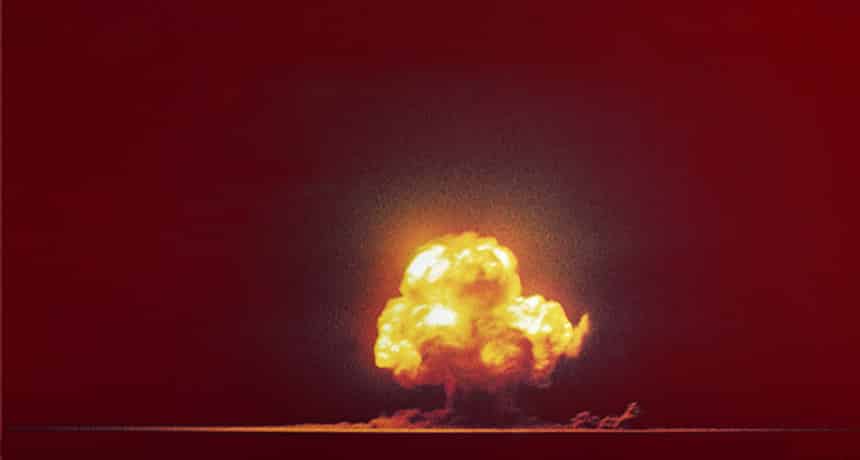
The radius of a nuclear blast depends on the size of the bomb, how high it was when it exploded, and what the weather was when it detonated.
The larger ones will create massive fireballs; each one can span several miles wide and can be as hot as the surface of the sun, coupled with winds that are stronger than a hurricane. Then there’s the radioactive fallout that can travel for miles.
The explosion of the nuclear blast alone could kill millions of people in an instant. After that, you’ll have to worry about the nuclear fallout which is just as deadly as the blast itself.
Fallout occurs when radioactive materials resulting from the blast is carried by the wind and falls to earth. People, wildlife, and plants can be poisoned; it can also be lethal.
The fallout may also manifest itself as “black rain”, which is not only toxic but also searing hot. If you’re unlucky enough to be caught in ground zero or where the fireball blast forms, then the chance of survival is pretty much zero.
The fireball resulting from the blast will incinerate all living things within its radius. However, if you’re several miles away from the attack, your survival rate increases. Keep in mind that you’ll have to go by a set of certain rules to maintain that.
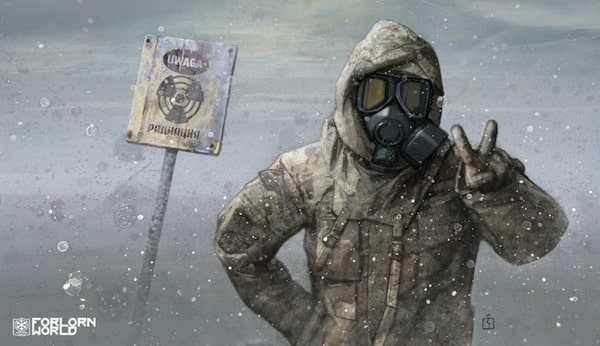
A nuclear attack is not immediately fatal as long as you know the best way to maximize your survival rate. The most important rule to remember is TO HIDE, NOT RUN. Try to get inside and stay indoors. Don’t follow movie logic.
Those who panic and venture outside will be exposed to harmful radioactive elements. Those who leave in search of their loved ones are most likely to perish. The less you get exposed to radiation, the better your chances of survival. Do these steps in order to decrease radiation exposure…
Step 1: Get Out Of There
The intense light from the nuclear blast should spur you to action. If you’re still alive and breathing after the initial nuclear blast, you’ll have roughly 10 to 20 minutes to quickly move away from the blast radius.
This is essential because the radiation coming from the mushroom cloud can lead to death. In about 24 hours, the radiation will be carried and scattered by prevailing winds. You’ll have 15 minutes to find a good shelter. Staying behind will get you lethally exposed to radiation.
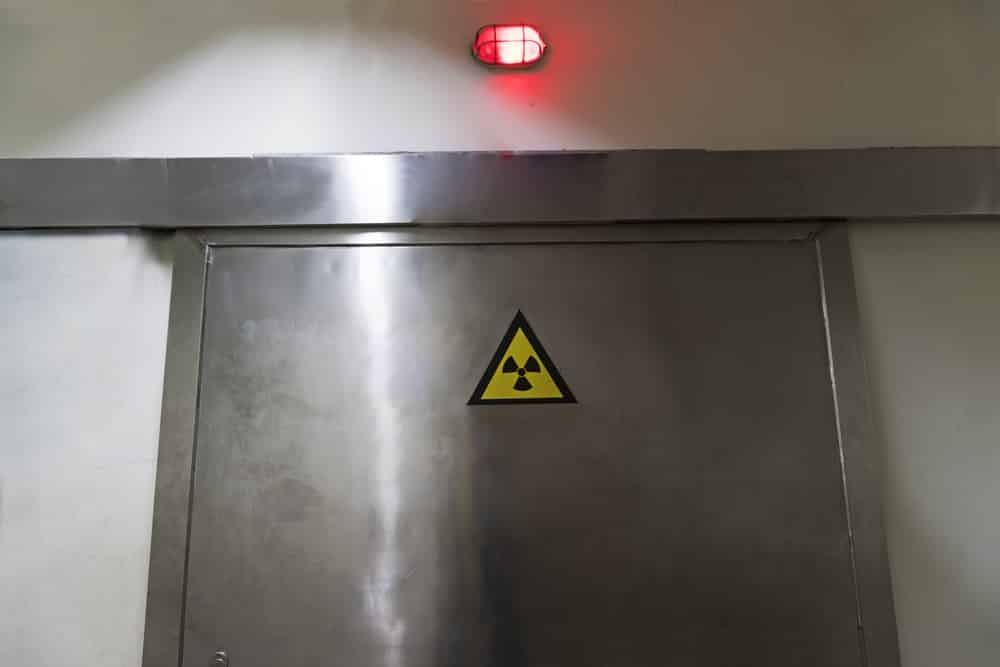
Those who are in a 5-mile (8 km) vicinity will suffer third-degree thermal burns. Even if you’re located 20 miles (32 km) away, there’s a chance that the resulting heat will melt the skin right off your body.
Wind can travel at around 600 mph (960 kph), leveling any structure it comes across. Check where the wind is going and start running at a perpendicular angle. Move downwind and consider the possible shelter locations along the way.
You can also do the “duck and cover” technique – which is taught in earthquake drills. It won’t protect you from the flame and the radiation, but it could prove useful if you’re in a city that has several high-rise buildings.
Step 2: Protect Yourself
Let’s say you were caught near the blast radius or outdoors with no shelter in sight. What is the right thing to do first? The first thing to keep in mind is to NEVER look at the nuclear blast.
It can blind and incapacitate you; the light from the bomb travels much faster than sound. The “flash blindness” can set you back precious minutes and lessen your chances of survival. This phenomenon may affect people who are 13 miles (21 km) away during the day or 50 miles (81 km) away during the night on a 1 megaton scale.
Keep your mouth open and your jaw slack to prevent your eardrums from popping due to pressure. Don’t touch anything that’s thrown off by the wind or the blast since it could be radioactive.
Cover your nose and skin as you run away to seek shelter. Keep an eye open for any combustible or flammable material as you’re navigating because they might ignite once the heat passes over. If you find a suitable shelter, remove any flammable or combustible material.

Oil-based materials (such as nylon) will melt and ignite from the resulting heat wave. The worst case scenario can be: you’re standing out in the open with no shelter for miles. Do the next best thing and find anything that could provide protection.
Search for depressed areas on the ground, lie face-down, and cover yourself as much as possible. You can dig on soft soil to make a depression. Lie completely flat and cover your head. The blast wave can reach you in as little as 30 seconds, so think fast and act quickly.
Step 3: Seek Shelter
There are two kinds of shelter for nuclear attacks – shelter from the nuclear blast and shelter from the resulting fallout.
Blast Shelters. These structures can be built to prepare for future nuclear attacks. They offer protection from the fire, heat, initial radiation, and the blast pressure from the nuclear strike. A blast shelter is not a cure-all, and it won’t stand a direct hit from a nuclear bomb.
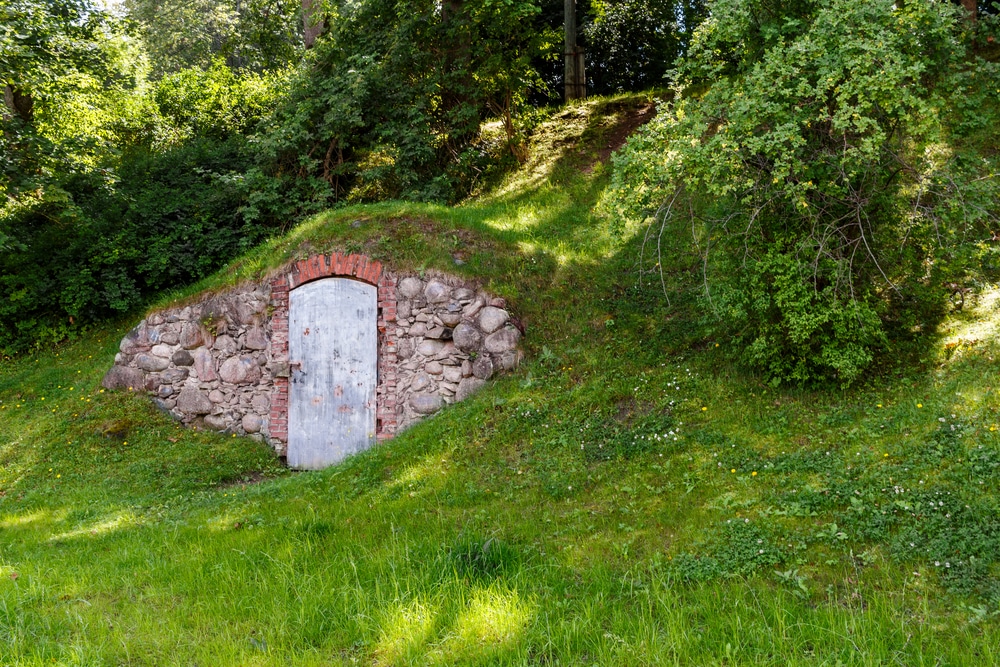
Fallout Shelters. These structures can be found anywhere. As long as an enclosed space is protected and the roof and walls are thick enough to ward off radiation and fallout particles, they can be classified as a fallout shelter.
A person’s instinct when they see the mushroom blast is to get back home and/or take their loved ones to safety. A radiation-filled atmosphere will make this task almost impossible to complete.
Instead, think about your survival and find some cover. Remember, go indoors or deep underground the minute you see the flash of explosion from a nuclear attack. In urban areas, basements are your best bet. In cases where the nuclear blast is on the ground, going to the upper floors/levels of the building can provide similar protection as deep below ground.
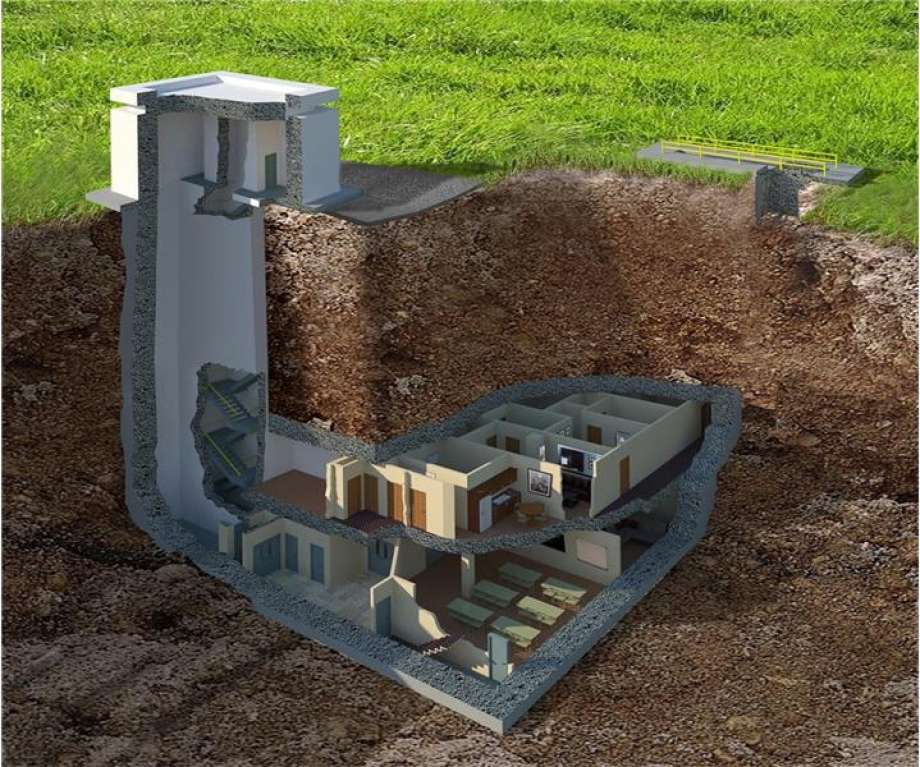
Stay away from windows; it would be better if you can find a room without windows such as a closet space or a janitor’s room. A nuclear blast can shatter any type of window and radiation can quickly invade your safe space. Get as much natural protection as possible.
Walls, soil, brick, and concrete should be gathered and placed between you and the radioactive material. The more material you have in-between, the better your chances of survival. Radiation loses its potency as it passes between materials such as earth, concrete, and other solid materials.
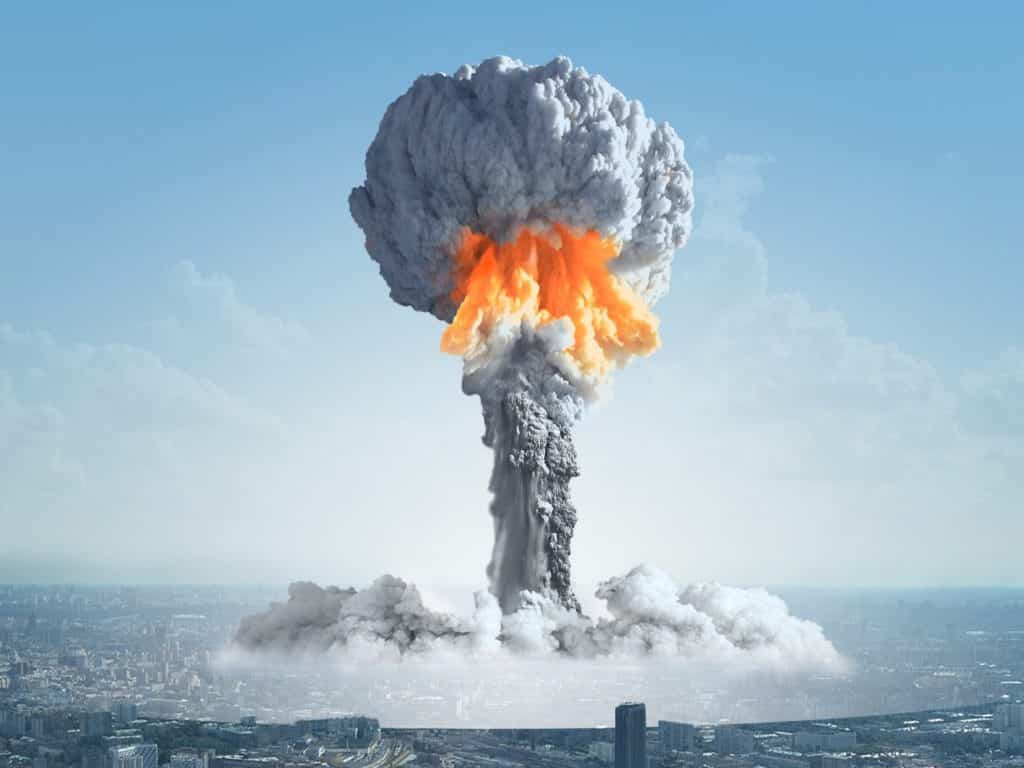
Step 4: Stay Inside!
Go underground. If that’s not possible, seek the best kind of shelter ASAP. Buildings or houses made from good old brick, mortar, and concrete are the best shelters. Get inside and stay where you are to protect yourself from the radiation.
You should also gauge whether a structure is stable against heat and possible blast damages before you get in. If you’re at home, keep your radio handy and keep it tuned to the news.
Listen and watch out for official information on how to proceed further. Depending on several circumstances, survivors may be asked to move to a secure location, evacuate the area, or stay indoors.
The general rule is that survivors must stay indoors (most preferably in the basement). Seal all windows, close all the doors, and turn off all ventilation systems such as heaters and ACs.
A car can provide temporary shelter if you’re caught in the blast. It’s definitely better than having nothing in-between you and the radioactive materials carried by the wind. Find a cloth and hold it over your mouth if you need to travel to a better shelter.
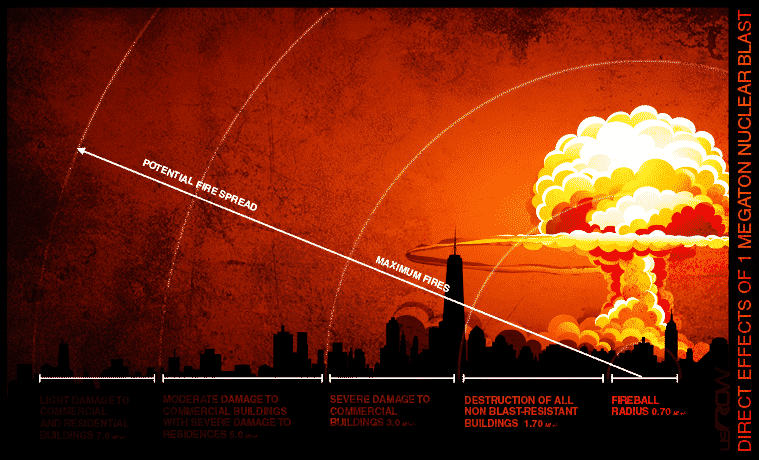
Fallout particles usually come in minute-sized sand grains. Stay away from them and don’t go outside if you see particles falling from the sky. Do a quick estimate – are you within 10 miles of the nuclear blast’s epicenter?
If you are, it’s best to remain inside the shelter for a good 48 to 72 hours after the attack. Do not come out no matter what the situation is! Since you’re stuck indoors, reinforce your shelter against radiation and fallout. Stack clumps of mud, cement-based materials, and bricks (if any) on the walls of your shelter.
Create a suitable roof if you’re residing in a trench, but don’t go out of your way to gather the materials. If you can acquire canvas from outdoor tents, use it to shield from fallout particles. You can worry about the gamma rays later.
There’s still a ray of hope – fallout from nuclear bombs decay rapidly! After the first hour, fallout loses half its negative energy. In 24 hours, around 80 percent of negative energy is lost in the atmosphere. With this in mind, you should count up to 200 hours and stay inside the shelter for around 8 to 10 days. It’s best to be on the safe side.
Plus, any fission products that come from the nuclear blast should be gone after 8 days. Even after 10 days, there are still radioactive particles floating around the atmosphere, so it will be best to limit your time outdoors. Radio-iodine particles are estimated to be at 1 percent strength after 90 days.

Step 5: Cover Up
After you have placed a safe distance from the nuclear blast and found a suitable protective shelter, you should take off your contaminated clothing to eliminate the radioactive dust. Take a shower if possible. Use plenty of water and soap to wash off the radioactive contamination.
Do not scrub or scratch your skin! Do not use conditioner because it could make the radioactive material stick to your hair. If there’s no accessible shower, use a wet cloth to wipe off as much radioactive material from your skin as possible.
You can use this decontamination procedure – remove your clothes and shake them off constantly to remove minute radioactive particles. Wash repeatedly with water. Wash your skin with plenty of soap and water. Any residue will result in skin burning and further complicate your survival situation.
B) Treating Radiation Exposure
Contaminated clothing should be kept in a plastic bag and sealed away. Place the bag where no one (or any animal) can open them to minimize the risk of radioactive exposure. Wear several layers of protective clothing to cover your skin.
Wear hats, goggles, long-sleeved shirts, long pants, and gloves if there are any. This step will protect you from the following types of radiation:
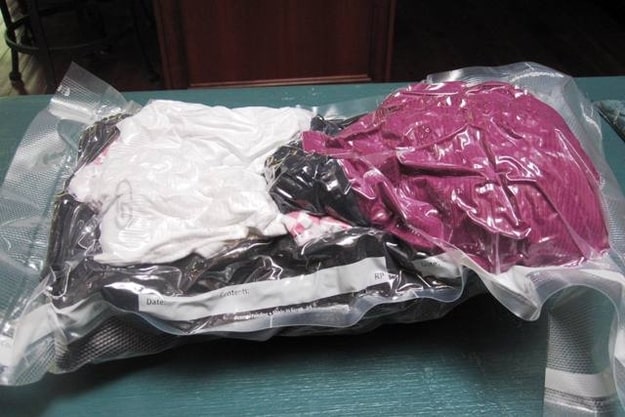
1) Alpha Particles – the weakest of all radioactive particles. These particles don’t pose immediate threat to humans since they can only survive for a few seconds after being released to the atmosphere. However, they are be harmful if inhaled or ingested.
2) Beta Particles – Beta rays penetrate deeper into materials and last longer than alpha particles. A beta particle is active while traveling at 10 yards before being absorbed by the earth’s atmosphere.
Beta particles are not particularly fatal – only if you are constantly exposed to it. Beta burns are somewhat akin to sunburns. Make sure to cover your eyes, nose, and mouth to avoid accidental ingestion or inhalation.
3) Gamma Rays – The deadliest of all radioactive particles and also the longest-lived. They can travel for miles and penetrate any shielding. Gamma ray exposure will turn your internal organs to mush.
You’ll need adequate planning if you want to minimize exposure as much as possible. It’s best to rid your body of all potential radioactive particles or report to the nearest decontamination center in your vicinity.
If possible, seek immediate treatment for thermal and radiation burns. Stay away from damaged structures; these are typically labeled with signs such as HAZMAT or radiation hazard. It’s best to be cautious since radiation is invisible.
Here’s how you can prepare against a nuclear scenario:
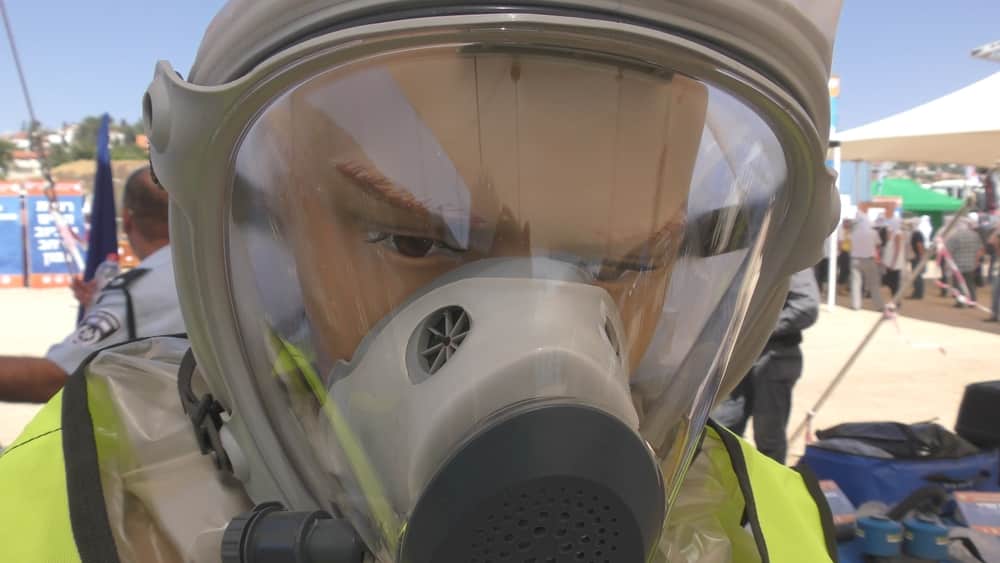
C) Prepping for a Nuclear Blast
- Keep Abreast of the News – Although a sudden nuclear attack is an unlikely scenario, chances are that warring nations will engage in failed talks that lead to displays of force such as air raids, ground battles, and covert operations. A deteriorating political situation, conflicting sides, and a terrorist group announcing war will be your nuclear attack indicators. Coordinate a plan with your loved ones on what you should all do and where you need to go if it happens.
- Stock Up On Potassium Iodide – These pills help protect against radiation (and thus, possible cancers). Protect your thyroid from radiation and keep a box of these pills in your home, car, or bug out bag. Read up on what brands are approved by the FDA and the appropriate dosage.

3. Store Clean Water and Food Inside Your Shelter – Food and water supply should last for at least 2 weeks. Keep a radio and plenty of batteries. Bath, hygiene supplies, and a set of fresh clothes should be stored as well.
4. Medical Kit – A first-aid kit, first aid manual, and common medical supplies should be kept in your shelter. You’ll need a blanket, thermometer, tweezers, scissors, latex gloves, antibiotic ointments, sterile bandages, and gauze.
5. Practice First Aid – Look for information online or visit the nearest Red Cross station for a quick instructional on how to treat shocks, burns, administer CPR, and how to bandage wounds.
6. Keep A Personal Radiation Detector – It’s a useful device to help you find out whether an item (or your surroundings) is irradiated or not.
The post 5 Steps to Prepare for & Survive a Nuclear Attack appeared first on GeekPrepper.
By: Tobias
Title: 5 Steps to Prepare for & Survive a Nuclear Attack
Sourced From: geekprepper.com/5-steps-to-survive-a-nuclear-attack/
Published Date: Mon, 31 Jul 2017 17:43:12 +0000
-------------------------------------------------------------------------
 CampingSurvivalistHuntingFishingExploringHikingPrivacy PolicyTerms And Conditions
CampingSurvivalistHuntingFishingExploringHikingPrivacy PolicyTerms And Conditions
